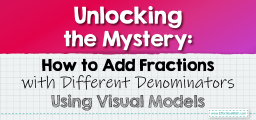How to Do Scaling Whole Numbers by Fractions?
In this step-by-step guide, you will learn how to do scaling whole numbers by fractions in a few simple and easy steps.

A step-by-step guide to Scaling Whole Numbers by Fractions
To scale whole numbers by fractions, convert the number into an upside-down format.
Whenever you multiply a whole number by a fraction less than \(1\) whole, the answer is less than the whole number.
Whenever you multiply a whole number by a fraction greater than \(1\) whole, the answer is greater than the whole number.
Here’s a step-by-step guide to scaling whole numbers by fractions:
Step 1: Understand the concept of scaling:
Scaling means multiplying a number by a certain factor to make it larger or smaller. In this case, we are going to scale a whole number using a fraction. This means we will multiply the whole number by a fraction to get a new, scaled whole number.
Step 2: Identify the whole number to scale:
The first step is to identify the whole number you want to scale. Let’s say the whole number is \(15\).
Step 3: Identify the fraction to use for scaling:
The next step is to identify the fraction you want to use for scaling. Let’s say we want to scale \(15\) by the fraction \(\frac{2}{3}\).
Step 4: Write the scaling formula:
The scaling formula for scaling a whole number by a fraction is:
Scaled Whole Number \(= \frac{\left(Whole\:Number\:\times \:Numerator\right)}{Denominator}\)
Step 5: Plug in the values:
Now we can plug in the values we have into the formula.
Whole Number \(= 15\), Numerator \(= 2\), Denominator \(= 3\)
Step 6: Multiply the whole number by the numerator:
Multiply the whole number \((15)\) by the numerator \((2)\):
\(15 \times 2 = 30\)
Step 7: Divide the result by the denominator:
Divide the result \((30)\) by the denominator \((3)\):
\(\frac{30}{3} = 10\)
Step 8: Interpret the result:
The result is the scaled whole number. So, when we scale the whole number \(15\) by the fraction \(\frac{2}{3}\), we get the new whole number \(10\).
Therefore, the answer is \(10\).
In summary, to scale a whole number by a fraction, you need to multiply the whole number by the numerator of the fraction and divide the result by the denominator of the fraction. This will give you the scaled whole number.
Scaling Whole Numbers by Fractions – Example 1
Which expression is greater? \(5\) or \(5×\frac{8}{3}\)
Solution:
Since, \(\frac{8}{3}\) is greater than \(1\), multiplying by \(\frac{8}{3}\) makes the value of the whole number greater. So, \(5×\frac{8}{3}>5\)
Scaling Whole Numbers by Fractions – Example 2
Which expression is greater? \(4\) or \(4×\frac{6}{7}\)
Solution:
Since, \(\frac{6}{7}\) is smaller than \(1\), multiplying by \(\frac{6}{7}\) makes the value of the whole number smaller. So, \(4×\frac{6}{7}<4\)
Exercises for Scaling Whole Numbers by Fractions
Which expression is greater?
- \(\color{blue}{6\: or\: 6\times \frac{5}{3}}\)
- \(\color{blue}{ 2\: or\: 2\times \frac{3}{8}}\)
- \(\color{blue}{7\: or\: 7\times \frac{4}{5}}\)

- \(\color{blue}{6\times \frac{5}{3}}\)
- \(\color{blue}{2}\)
- \(\color{blue}{7}\)
Related to This Article
More math articles
- 10 Most Common 6th Grade SBAC Math Questions
- How to Complete a Function Table from an Equation
- 10 Most Common SSAT Upper-Level Math Questions
- Algebra Puzzle – Challenge 42
- DAT Quantitative Reasoning Formulas
- How to Unraveling the Transitive Property: A Key to Understanding Mathematical Relationships
- Rules of Exponents
- How to Find the Perimeter of Right-Angled Triangle?
- p-Series in Infinite Sums: Convergence Test Simplified
- How to Find Probability of an Event? (+FREE Worksheet!)


























What people say about "How to Do Scaling Whole Numbers by Fractions? - Effortless Math: We Help Students Learn to LOVE Mathematics"?
No one replied yet.